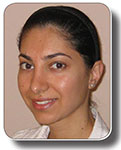To SSIV, or not to SSIV: that is the question
Steven Cooper A and Fiona Aoun AGranherne
The APPEA Journal 49(1) 13-24 https://doi.org/10.1071/AJ08002
Published: 2009
Abstract
Sub Sea Isolation Valves (SSIVs) are normally considered for installation on the majority of facility builds. They first started coming to prominence in the world of safety following the Piper Alpha tragedy in 1988, where 167 people died and the platform was destroyed as a result of an explosion and fire.
The aim of SSIVs is to protect the people on the platforms by limiting the amount of hydrocarbon available for a jet fire. Reducing the severity of a jet fire protects the integrity of manned living quarters in the event of an issue with the pipeline. This theory still holds true today but twenty plus years on SSIVs are not always included in new facility designs.
Oil and gas fields developed in the future are more likely to be in more remote locations with large diameter pipelines tied back to onshore processing facilities. With well bays being replaced by subsea wells and flowlines it would be thought that the SSIV would now be man’s best friend; however, with the oil and gas industry showing a declining trend in fatalities around the world and with design improvements preventing and mitigating the occurrence of major accident events, many operators are questioning the added benefits of the SSIV.
This paper debates the use of the SSIV and explores the issues over which many design teams deliberate. It considers the positives and the negatives associated with the SSIV and illustrates why an SSIV installation is a case-by-case prospect. A case study using a risk-based approach for installing the SSIV as part of a design concept is used to help illustrate this point.

Steve Cooper is a chartered chemical engineer with over 14 years experience in the offshore oil and gas industry and onshore petrochemical industry. His specialist fields of competence include safety engineering, safety case development (formal safety assessments), quantitative and qualitative risk assessments and computer consequence modelling of hydrocarbon and toxic chemicals. He has invaluable processing plant and operations experience from when he worked as a process engineer involved with numerous plant upgrades and part of start-up and shutdown teams. His involvement in oil and gas activities has seen him complete safety-engineering support as part of design teams and facility upgrades for mobile and fixed offshore operations and onshore operations in the UK, Asia, Australia and Russia for a variety of major operators. Steve.Cooper@Granherne.com |

Fiona Aoun is employed as a safety and risk engineer at Granherne’s Perth office. She has over six years experience providing HSE support to major field developments in the oil and gas industry from select phase through to execution. She is responsible for the development of safety and risk design studies for various onshore and offshore (mobile and fixed) hydrocarbon facilities. She holds BEng (Chemical) degree. Chartered member: Institute of Engineers Australia. Fiona.Aoun@Granherne.com |


